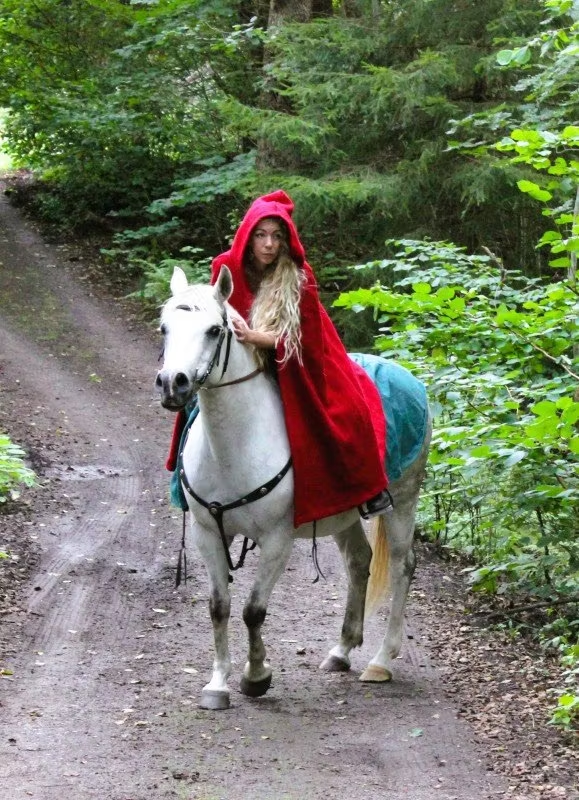Varukorg
Rabatt:
0,00 SEK
Fallorka Design and Company |9/08, 2025

In the harsh Scandinavian environment, the cloak offered protection from wind, rain and cold. It was often made of thick wool, which is known for its insulating properties. The Vikings used their cloaks when traveling and raiding, but also in everyday life. The cloak was therefore an indispensable piece of clothing that provided comfort and protection.
The cloak also had a practical function in a social context. In a society characterized by hierarchies and social structures, the quality and design of a cloak could say a lot about the wearer's status. High-quality materials and detailed decorations were often reserved for the wealthier classes.
Social status could often be inferred from the cloak. While simple farmers and warriors wore coarse, unbleached wool cloaks, the cloaks of the wealthier Vikings were made of finer wool and were often decorated with elaborate patterns and embroidery. These differences in clothing reflected social hierarchies and served as status symbols.
Symbolically, the cloak was also a sign of power and authority. In sagas and legends, powerful Viking chieftains and warriors are often depicted wearing magnificent cloaks. These depictions emphasize the importance of the cloak as a symbol of strength and leadership.
In some cases, cloaks were also used as ritual objects. Richly decorated cloaks were often included in the grave when high-ranking individuals were buried, indicating that these garments were believed to also play a role in the afterlife.
Materials used for the Cloak:
The Vikings primarily used wool and linen to make their coats. Wool was the preferred material because it had excellent insulating properties in the cold Nordic climate. The wool came from sheep native to the region and was carefully selected to produce the best fibers. Linen, which was made from flax, was also a common material and was often used for lighter coats or as lining.
Wool came in different qualities, depending on the breed of sheep and how the wool was processed. Finer wool was used for the cloaks of the wealthy Vikings, while coarser wool was used for everyday clothing for ordinary people. Linen, on the other hand, was more expensive and more complicated to manufacture, as the flax had to be harvested, dried, broken, and finally spun into yarn.
Weaving technique and manufacturing process:
The production required great skill and experience. The Vikings used various weaving techniques to make their cloaks. One of the most common techniques was the so-called twill weave, where the threads were woven diagonally to create a durable yet flexible fabric. The technique made it possible to produce robust and durable cloaks that could withstand the harsh conditions of the Viking Age.
The manufacturing process began with wool or linen being spun into yarn. This was often done with a handspin or a simple spinning wheel. The spun yarn was then dyed using natural dyes from plants, berries and minerals. Popular colors were red, blue, green and yellow, all of which had symbolic meanings and could reflect the wearer's social status.
After dyeing, the yarn was woven into fabric on a loom. Viking looms were usually simple, vertical looms that made it possible to produce wide pieces of fabric. These pieces of fabric were then cut and sewn together to form cloaks. The edges of the cloaks were often adorned with decorative borders or embroidery to give them an attractive appearance and reflect the wearer's personal taste.
Differences in the design of the cloak:
The design of the cloaks also varied greatly. Simple cloaks were often rectangular and fastened at the shoulder with a brooch or buckle. This type of cloak was practical and could be easily taken on and off.
More advanced cloaks often had a more complicated shape and sometimes had hoods or additional layers to provide extra protection and warmth. The decorations could vary from simple patterns to detailed depictions of animals and mythological scenes.
Another important aspect of Viking Age cloaks was their symbolic meaning. Certain colors and patterns could indicate social status or belonging to a particular group. For example, red and blue cloaks were often reserved for the wealthier classes, as the dyes for these colors were expensive and difficult to obtain.